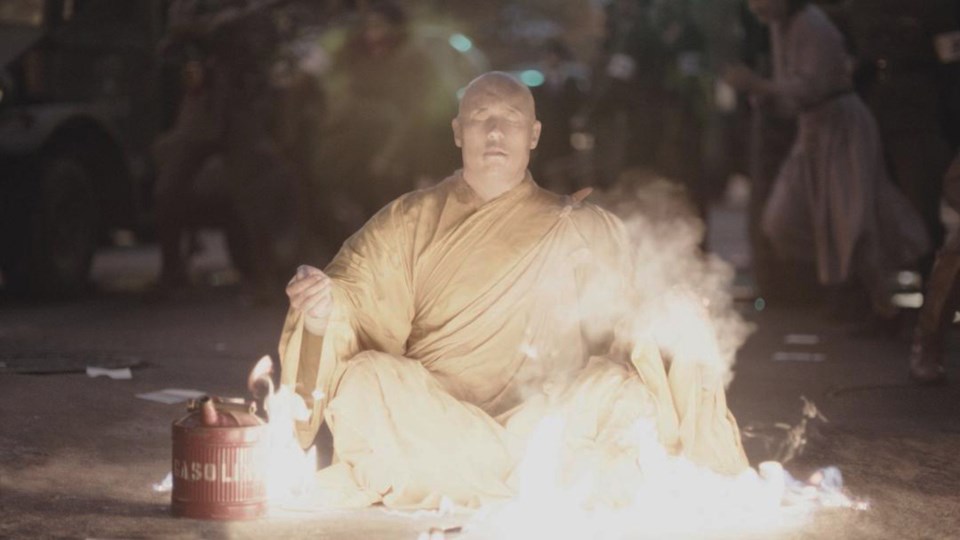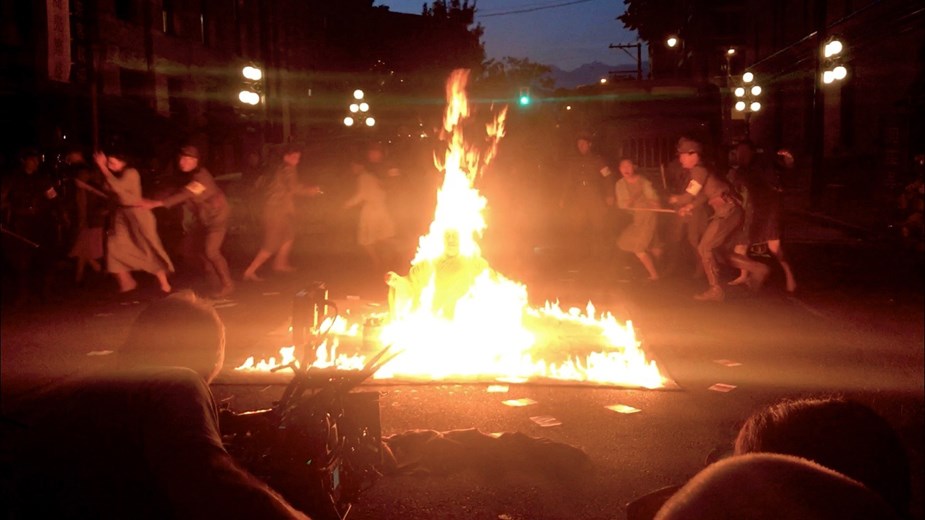Realism is important in The Man in the High Castle â which might sound surprising, considering the locally shot Amazon Original series is dystopian fiction.
The Man in the High Castle takes place in an alternate reality where the Allies lost the Second World War. Itâs the 1960s, and what was once North America is now divided into the Greater Nazi Reich and the Japanese Pacific States. Fascism is the status quo, but a resistance movement is rising.
While The Man in the High Castle (the third season of which hit Amazon earlier this month) is dystopian fiction, it also rings true. Fascism is having a moment; weâre one election, war, or missile crisis away from living The Man in the High Castle. And when The Man in the High Castle leans into that realism, itâs doubly terrifying, and doubly engrossing. Â
Thus, realism was top of mind when stunt coordinators Jeff and Maja Aro first read the fourth episode of the third season and noted the presence of an unnamed character theyâd come to refer to as the Burning Monk.
The character was inspired by ThÃch Quang Duc, a Buddhist monk who self-immolated at an intersection in Saigon in 1963 to protest the South Vietnamese Diem regime.
In the High Castle script, a robed monk walks purposely through a violent riot. He pours a circle of gasoline on the pavement, sits within it, and lights himself on fire.
It was up to the Aros â a married couple who run Sea to Sky Stunts and have been involved with The Man in the High Castle since its first season â to recommend a course of action to the producers. Should they create the Burning Monk with computer-generated imagery? Light a mannequin on fire? Or attempt the stunt with a human being?
Their preference was for the latter, because of that aforementioned commitment to realism.
In fact, Jeff wanted to be the one to self-immolate.
âItâs exciting as a stunt performer to be able to do something that exciting,â says Jeff. âItâs a challenge for me mentally and physically.â
The Aros suggested to producers that, once lit, the monk could move into a prayer position. âPart of our job is to figure out the non-verbal physical action that matches the tone of the show,â says Jeff. â[The monkâs self-immolation] was the most selfless sacrifice that a person could do. Obviously heâs trying to draw attention to a particular issue. Youâre fighting your natural instincts to run and scream and yell. The monk chooses to put his hands together and pray.â
Once theyâd made their recommendations â and production green-lit their course of action â the Aros immersed themselves in research and development.
R&D meant studying videos of ThÃch Quang Duc (âIt was a statement,â says Maja, adding that she found the videos difficult to watch. âHe wasnât hurting anyone else. People had to watch. People had to start paying attentionâ), and also bringing Colin Decker of Fire For Hire onto the team.
Decker â along with business partner Dustin Brooks â was nominated for a technical Academy Award in 2007 for developing a fire-barrier gel that can be applied onto human skin and lit on fire, creating the illusion that the flesh itself is burning.
With Deckerâs assistance, they calculated how long Jeff would have before the fire would get too hot. They arrived at a number: 10 seconds.
âOnce we understood that amount of time, then we could work backwards and make sure we had a procedure for extinguishing me,â says Jeff. Â
The scene presented a key challenge: the monk was seated. âAnd when youâre not moving, the fire gets way hotter and you canât move away from it, and youâre stuck in it,â says Jeff.
They planned to start the fire low on his back, and ensure his robe was comprised of natural fibres (âAny synthetic fibres would melt and cling-wrap to you and burn you worse,â says Maja).
On the day they shot the Burning Monk in Gastown, Maja says she was the calmest person on set. âSome of the producers were giving me hugs. They were like, âHow are you not nervous?â But I feel calm. I feel confident.â
Calmness and confidence aside, she did have an ambulance on standby.
âWhen youâre breaking down a stunt like this, youâre always thinking worst case scenario,â says Maja.
Eventually, the first assistant director handed the set over to Maja. She called for the cameras to start rolling. The team fuelled Jeff (who was already covered in the fire-barrier gel) with the accelerant, and applied the gel to his nose and mouth, at which point he had to start holding his breath.
And with that, they set Jeff on fire.

Theyâd prepared for two takes, but got what they needed in 10 seconds â and the Burning Monk was subsequently extinguished.
âEverything went according to plan,â says Maja. âThe stunt turned out great. Everyone was happy with it. What shows up on screen, it turned out really well.â
Jeff ended up with a few blisters. Heâd shaved his head that morning. âThere was nothing holding the gel behind my ears, so that gel ran off quite quickly, and behind my ears is where the heat became too much,â he says.
Maja is currently stunt coordinating The Man in the High Castleâs fourth season; Jeff is stunt coordinating on Lost in Space.
The Burning Monk represents a career highlight for them both, but itâs one theyâre quick to share with the High Castle team.
âThere was a lot of trust,â says Maja. âThere were a lot of people who brought that to life.â
The Man in the High Castle is streaming on Amazon Prime.
Follow .


